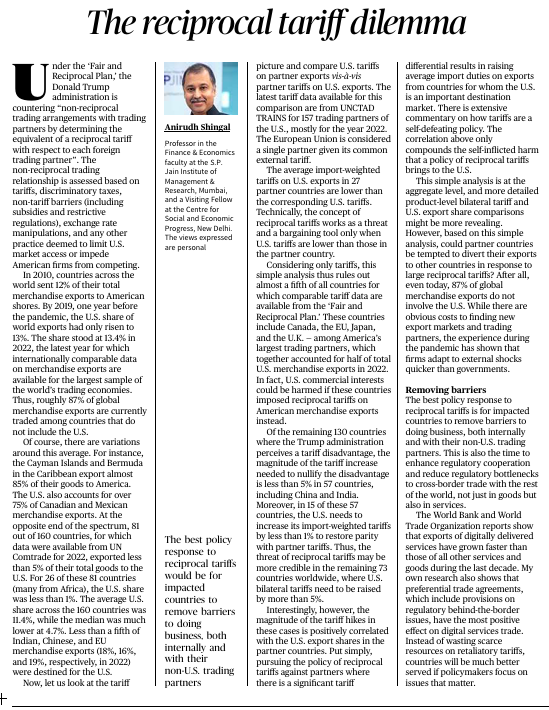GS Paper II (Governance, Constitution, Polity, Social Justice & International Relations)
Introduction
- The UK’s Department for Science, Innovation, and Technology and the AI Safety Institute released the International AI Safety Report (updated February 18, 2025).
- The report highlights the risks associated with AI-generated Child Sexual Abuse Material (CSAM).
- The UK is introducing new legislation targeting threats posed by AI tools that generate CSAM.
- Reports from the World Economic Forum (WEF) and Internet Watch Foundation (IWF) emphasize the increasing danger of AI-generated deepfake child abuse content.
Recent Developments
- The UK’s legislation will criminalize the possession, generation, and distribution of AI-generated CSAM.
- The law ensures that AI-generated CSAM is treated the same as real CSAM.
- A study reveals that AI-generated CSAM creates loopholes in existing child protection laws.
- A report by the Coroners and Justice Act (2009) outlines challenges in defining what qualifies as prohibited images of children.
- The UK’s proposal clarifies that AI-generated CSAM should be treated as unlawful, unlike existing laws which apply only to real children.
India’s Current Legal Framework and Challenges
- India’s National Crime Records Bureau (NCRB) Report 2022 shows a rise in cybercrimes against children.
- The National Cyber Crime Reporting Portal (NCRP) has seen an increase in cases involving deepfake and AI-generated pornography.
- The NCRB 2019 report showed a five-fold rise in child pornography cases.
- Many states lack adequate cyber-policing infrastructure, making it difficult to combat AI-generated CSAM.
- Statistics from the WeProtect Global Alliance indicate that India ranks among the top three in child sexual abuse material consumption.
The Need for Legal Reform in India
- India’s Information Technology (IT) Act, 2000 and Protection of Children from Sexual Offences (POCSO) Act, 2012 do not explicitly address AI-generated CSAM.
- Legal experts recommend updating Section 67B of the IT Act to include AI-generated child abuse material.
- The NCRB’s Advisory (October 2023) suggests replacing the term “child pornography” with “CSAM” to cover AI-generated material.
- Section 294 of the Indian Penal Code (IPC) criminalizes obscene content but does not specifically address AI-generated child exploitation.
Proposed Solutions and Future Steps
● India must update its laws to keep up with emerging threats like AI-generated CSAM.
● The IT Ministry and AI Ethics Committees should collaborate on new frameworks to combat AI-driven child abuse.
● Strengthening the “Digital India Act” could help regulate AI-generated CSAM.
● Public awareness campaigns should be launched to educate internet users about AI-driven threats.
● Collaboration with global cybersecurity agencies is necessary to track and prevent AI-generated child abuse material.
conclusion: This summary captures the key points of the article regarding the dangers of AI-driven child exploitation and the legal challenges in combating it. Let me know if you need further elaboration
Discuss the legal and ethical challenges posed by AI-generated Child Sexual Abuse Material (CSAM). Suggest measures to strengthen India’s legal framework to tackle this issue. (250 words)
General Studies (GS) Paper 2 – International Relations & Trade
Summary of the Editorial – “The Reciprocal Tariff Dilemma”
Concept of Reciprocal Tariffs
- The ‘Fair and Reciprocal Plan’ by the Trump administration aimed to assess and counter “non-reciprocal” trading arrangements.
- Non-reciprocal trading includes tariffs, discriminatory taxes, subsidies, exchange rate manipulations, and other trade barriers that restrict U.S. market access.
- The plan sought to impose reciprocal tariffs when foreign tariffs were lower than U.S. tariffs.
U.S. Share in Global Exports
- In 2010, 27% of global merchandise exports were to the U.S., which increased to 31.4% in 2022.
- Currently, 87% of global merchandise exports are from economies that do not include the U.S.
- The U.S. is the dominant export destination for Canada, Mexico, Guyana, and Bermuda (85% of their exports go to the U.S.).
- In contrast, 81 out of 160 countries analyzed had less than 10% of their exports directed to the U.S.
Tariff Comparison and Imbalances
- UNCTAD TRAINS 2022 data was used to compare tariffs.
- In 27 partner countries, the average import-weighted tariffs on U.S. exports were higher than the corresponding U.S. tariffs.
- Reciprocal tariffs act as a negotiation tool when U.S. tariffs are lower than those in partner countries.
Limitations of Tariff-Based Analysis
- Tariff-based analysis ignores non-tariff barriers, regulatory policies, and trade agreements that impact market access.
- S. businesses could divert exports to other countries in response to reciprocal tariffs, potentially harming their own economy.
- While reciprocal tariffs may target key markets, they may not fully address trade imbalances.
Impact on Trade and Policy Considerations
- 57 countries, including China and India, had less than a 1% tariff differential, meaning the impact of reciprocal tariffs would be minimal.
- To match the effect of reciprocal tariffs on all trade partners, the remaining 73 countries would have to raise their bilateral tariffs by more than 5%.
Optimal Policy Response
- Instead of reciprocal tariffs, countries should focus on removing trade barriers internally and with non-U.S. partners.
- A comprehensive regulatory approach is needed rather than selective tariff adjustments.
- The World Bank and WTO support digital services trade liberalization as a better alternative to reciprocal tariffs.
- Future trade policies should emphasize cross-border regulatory coherence rather than retaliatory tariffs.
Conclusion
- Reciprocal tariffs alone cannot resolve trade imbalances and could have unintended consequences.
- A broader strategy that includes regulatory alignment and reducing internal trade barriers is a better approach.
Practice mains question:
Discuss the concept of reciprocal tariffs and their implications on global trade relations. How can such policies impact emerging economies? (250 words)



